Dumbbells, Are they really worth the investment?
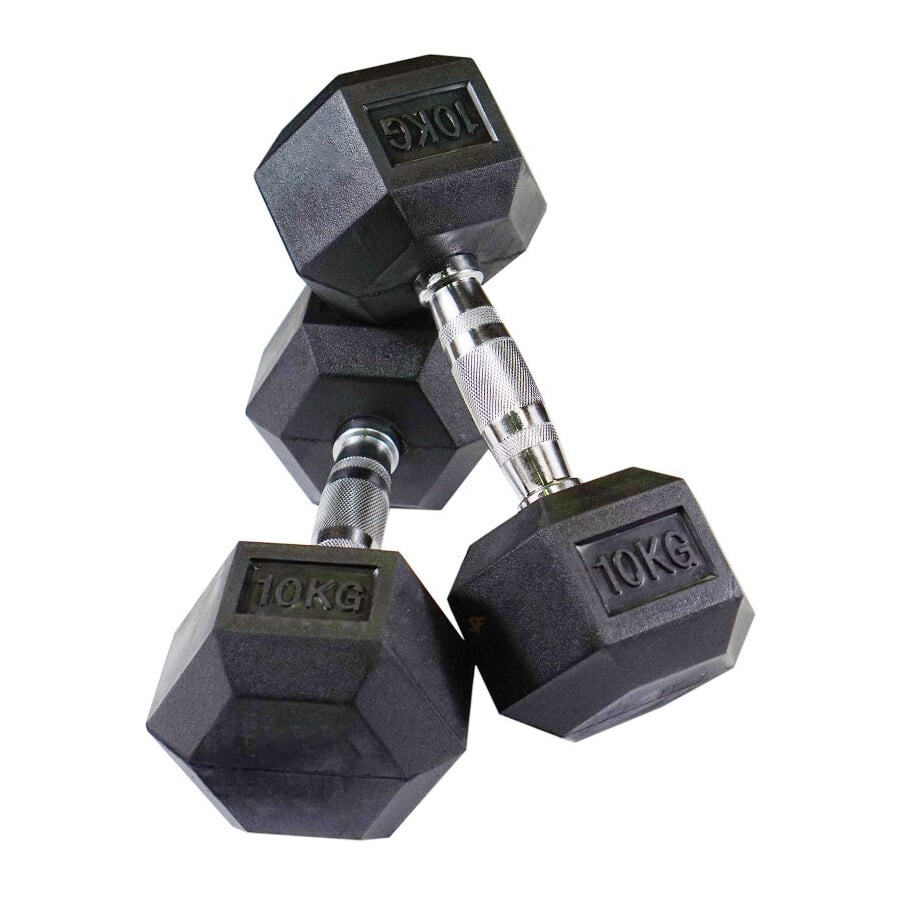
Introduction
In Kenya, we see the increased popularity of dumbbells in the fitness industry. Therefore, if you are a Fitness enthusiast or a workout newbie, you’ve probably considered purchasing a dumbbell. However, the one question that keeps running through your mind is, are they really worth it? I completely get it! Dumbbells can be pricey and knowing their worth before investing is understandable. After reading this article you will be able to come up with a more informed decision.
From ancient Greece to your home gym, dumbbells have stood the test of time. These versatile weights were used for resistance training as early as the 5th century BC, they have evolved from simple tools to a cornerstone of modern strength routine. They were crafted from stone or sand-filled bags and used by soldiers and athletes. Not only in ancient Greece but also in Ancient Egypt and Ancient India. It was initially referred to as a dumbbell, the term “dumbbell” originated in England.
In this post, we’ll explore how dumbbells can help you achieve your fitness goals. We’ll also provide a range of workout suggestions tailored to different fitness levels, from beginner bodyweight exercises to advanced dumbbell routines, ensuring you can make the most out of your home training sessions. Let’s get started!
Types of Dumbbells
1. Fixed-weight dumbbells
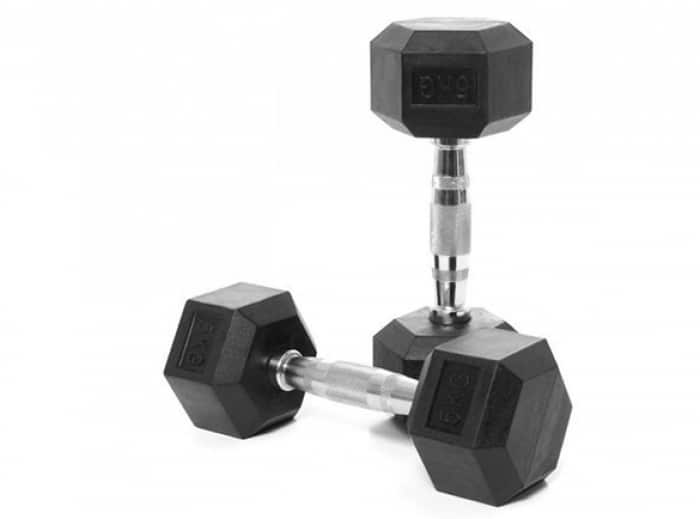
Fixed-weight dumbbells are the most common and are available in a range of weights. Each dumbbell is a single, unchangeable weight, making them straightforward and durable. They are typically made from materials like rubber, cast iron, or neoprene. Rubber dumbbells are more durable and less likely to damage floors, while neoprene dumbbells offer a comfortable grip and are often color-coded by weight.
2. Adjustable dumbbells
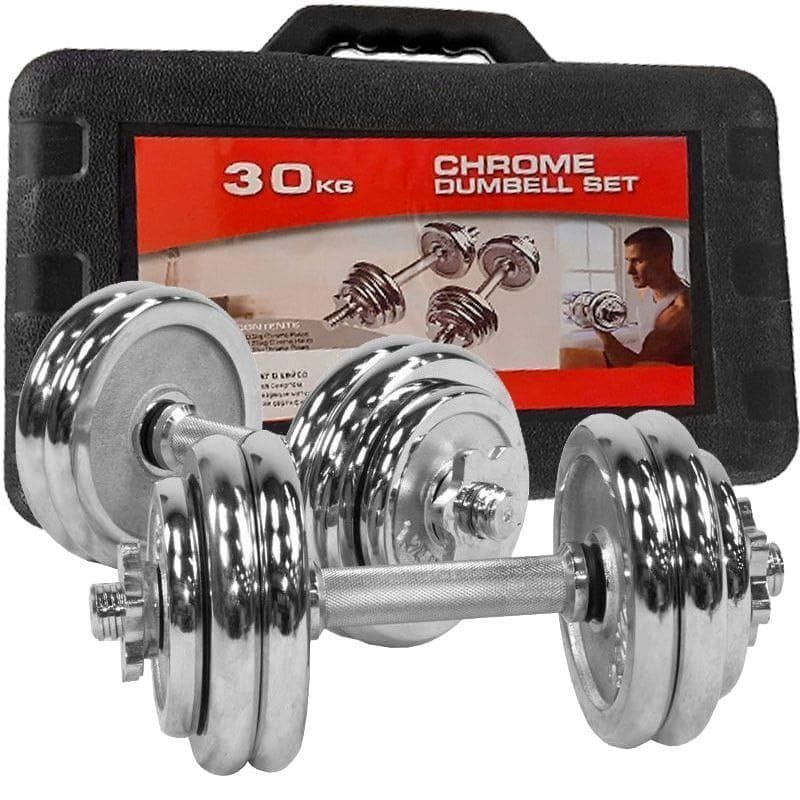
Adjustable dumbbells, on the other hand, allow for a variety of weights using a single pair of dumbbells. These are ideal for those with limited space, as they can replace multiple fixed-weight sets. They usually consist of a handle with removable plates that can be added or removed to adjust the weight. While they offer flexibility, they can be less durable and require more time to adjust between exercises.
3. Selectorized dumbbells
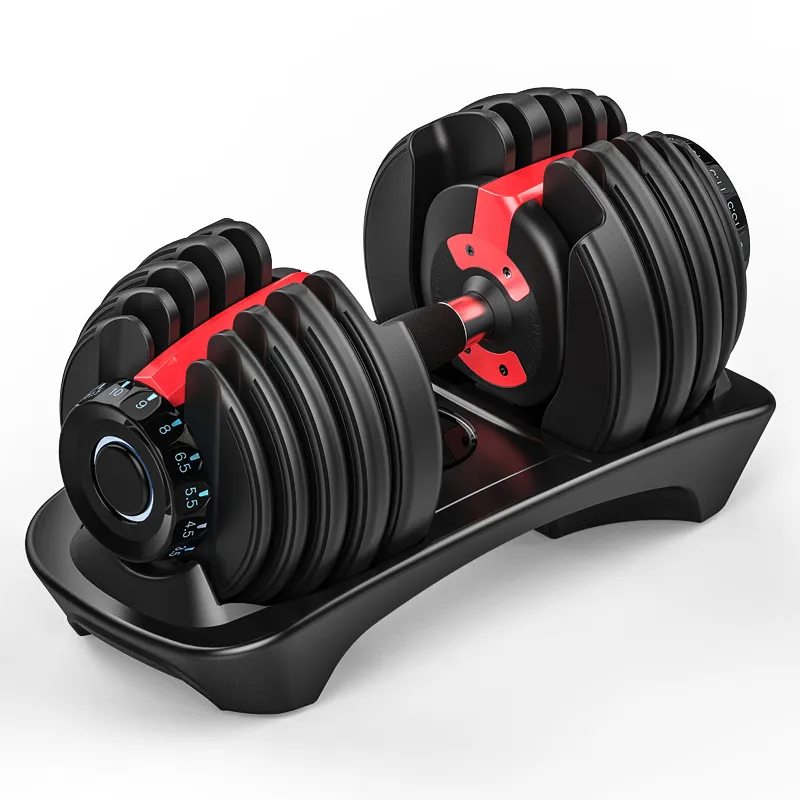
Selectorized dumbbells are a more advanced form of adjustable dumbbells. They use a dial or pin mechanism to quickly change the weight, making them convenient for varied workouts. Although they are typically more expensive, they save time and space and provide a wide range of weight options without needing multiple dumbbells.
4. Studio Dumbbells
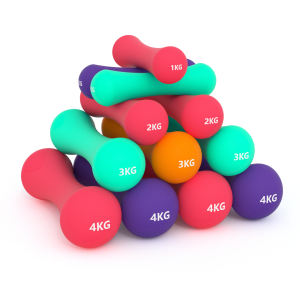
Studio dumbbells are generally lightweight and typically made from neoprene or vinyl. Designed for group fitness classes or lighter workouts, they are easy to handle and store. While they lack the durability and weight range of other types, they are excellent for beginners or those focusing on high-repetition, low-weight exercises.
Dumbbells come in a wide weight range, from very light (around 0.5 kg or 1 lb) to extremely heavy (over 100 kg or 220 lbs) for advanced lifters. You can buy them individually or in adjustable sets, with the availability depending on the brand and store. Sets often provide a cost-effective option and ensure you have a range of weights to accommodate different exercises and progression.
Dumbbells Pros and Cons
Just like everything else, dumbbells also have its own advantages and disadvantages, it’s often a matter of perspective and how something is used. Let’s explore these in detail.
Benefits of Having a Dumbbells
- Versatility: Dumbbells allow you to target a wide range of muscle groups with a variety of exercises. Unlike machines that limit movement, dumbbells offer a greater range of motion. This allows for more natural movement patterns and helps in targeting specific muscle groups effectively.
- Convenience: Dumbbells are compact and portable, making them ideal for home workouts or travel. You can easily create a full-body workout routine without needing a lot of space.
- Improved Strength and Muscle Building: Dumbbells allow for progressive overload, meaning you can gradually increase the weight lifted as you get stronger, leading to muscle growth and improved strength.
- Better Balance and Coordination: Using dumbbells for unilateral exercises (working one arm or leg at a time) challenges your core and stabilizer muscles, promoting better balance and coordination.
- Increased Core Engagement: Many dumbbell exercises require core stability to maintain proper form, which can strengthen your core muscles alongside your target muscles.
- Cardio Benefits: Dumbbell exercises can be performed with a faster tempo to elevate your heart rate, adding a cardiovascular element to your workout.
- Cost-effective: Compared to a gym membership, dumbbells are a one-time investment that can save you money in the long run.
Cons of Using Dumbbells
- Limited Weight Progression: Depending on the weight range of your dumbbells, you might eventually reach a point where it’s difficult to further increase resistance. Adjustable dumbbells help overcome this, but they tend to be more expensive. If you find yourself in this sort of situation, you can increase the number of repetitions (reps) and sets per exercise, as you get stronger with a particular weight. This will continue to challenge your muscles and promote growth. As your strength improves, consider shortening your rest periods between sets. This can increase the intensity of the workout and lead to more muscle fatigue.
- Higher Risk of Injury: Using dumbbells requires proper form to avoid injuries. Without a spotter, it’s crucial to start with lighter weights and focus on proper technique. Remember, lighter weights are your friend when starting out. Master the form first, then gradually increase the weight as you get stronger. This progressive overload approach ensures your muscles adapt safely and efficiently.
- Not Ideal for All Exercises: Certain exercises, particularly compound lifts with heavy weights, are better suited for barbells due to the stability they offer. Dumbbells are great choice for anyone looking to improve their strength, muscle tone, and overall fitness. If you have other reasons consider adding more fitness equipment to your collection that will aid you in every step of your journey. As you scroll down the article you will find alternative workout if Dumbbells are unavailable.
- Limited Guidance: Without a personal trainer, you might need to do some research or find workout routines online to ensure you are targeting all muscle groups effectively. However after reading this article you will be able to make the most out of your dumbbell. You will be able to get workout routines if you are a beginner, an intermediate and a Pro.
Major Muscle Groups Targeted with Dumbbells
Let’s break down the major muscle groups and specific exercises that can be performed using dumbbells.
- Chest
The chest muscles, also known as the pectorals, can be effectively targeted with exercises such as the dumbbell bench press, chest flyes, and push-ups. The dumbbell bench press focuses on building strength and mass, while chest flyes work on the inner chest for definition. Push-ups, although traditionally bodyweight exercises, can be intensified with the use of dumbbells for added resistance.
- Back
The back muscles, including the latissimus dorsi, trapezius, and rhomboids, can be engaged with exercises like dumbbell rows, bent-over rows, and pullovers. Dumbbell rows are excellent for overall back development, while bent-over rows target the upper back and pullovers stretch and strengthen the lats and chest simultaneously.
- Shoulders
To work on the deltoids and surrounding shoulder muscles, exercises such as the dumbbell shoulder press, lateral raises, and front raises are highly effective. The dumbbell shoulder press is great for building overall shoulder mass, lateral raises focus on the side delts for width, and front raises target the anterior delts for a well-rounded shoulder development.
- Arms
For the biceps and triceps, dumbbells offer a variety of exercises like bicep curls, tricep extensions, and hammer curls. Bicep curls are a staple for building arm strength, tricep extensions isolate the triceps for better definition, and hammer curls are effective for both the biceps and forearms, enhancing grip strength.
- Legs
Leg muscles, including the quadriceps, hamstrings, and glutes, can be targeted with dumbbell exercises such as squats, lunges, and Romanian deadlifts. Dumbbell squats are excellent for overall leg development, lunges help in improving balance and targeting the quads and glutes, and Romanian deadlifts focus on the hamstrings and lower back, providing a comprehensive leg workout.
Incorporating these exercises into your routine can ensure that all major muscle groups are effectively trained, making dumbbells a worthwhile investment for home training.
Sample Dumbbell Workout Routines
For individuals looking to incorporate dumbbells into their fitness regimen, having structured workout routines can provide clear guidance and help achieve specific fitness goals. Below, we present three distinct routines tailored to various fitness levels: a beginner full-body workout, an intermediate upper/lower body split routine, and an advanced push/pull/legs split routine. Each routine includes recommended exercises, sets, reps, and an overall weekly schedule to ensure balanced and effective training.
1. Beginner Full-Body Workout
This workout is designed for those new to strength training with dumbbells, focusing on building foundational strength and muscle endurance. Perform this routine three times a week, allowing at least one rest day between sessions.
In exercise terms, “4 sets of 15 reps” refers to the number of repetitions (reps) and sets performed in a strength training exercise
- Sets: A set is a group of repetitions performed consecutively before taking a short rest. In this case, you would do 4 sets of the exercise.
- Repetitions (reps): A repetition is one complete cycle of the exercise. For each set, you would perform the exercise 15 times.
Exercises:
- Dumbbell Squats: 3 sets of 12 reps
- Dumbbell Bench Press: 3 sets of 10 reps
- Dumbbell Bent-Over Rows: 3 sets of 12 reps
- Dumbbell Shoulder Press: 3 sets of 10 reps
- Dumbbell Bicep Curls: 2 sets of 15 reps
- Dumbbell Tricep Extensions: 2 sets of 15 reps
2. Intermediate Upper/Lower Body Split
This routine is suitable for those with some experience in dumbbell training, aiming to enhance muscle growth and strength. Perform the upper body workout on Mondays and Thursdays, and the lower body workout on Tuesdays and Fridays.
Upper Body Exercises:
- Dumbbell Chest Press: 4 sets of 8 reps
- Dumbbell Shoulder Press: 3 sets of 10 reps
- Dumbbell Rows: 4 sets of 10 reps
- Dumbbell Lateral Raises: 3 sets of 12 reps
- Dumbbell Bicep Curls: 3 sets of 12 reps
- Dumbbell Tricep Kickbacks: 3 sets of 12 reps
Lower Body Exercises:
- Dumbbell Lunges: 4 sets of 10 reps per leg
- Dumbbell Deadlifts: 3 sets of 10 reps
- Dumbbell Step-Ups: 3 sets of 12 reps per leg
- Dumbbell Calf Raises: 3 sets of 15 reps
- Dumbbell Goblet Squats: 4 sets of 10 reps
3. Advanced Push/Pull/Legs Split
For seasoned lifters, the push/pull/legs split offers an intensive approach to maximize muscle hypertrophy and strength. This routine is performed six days a week, with each muscle group targeted twice weekly.
Push Day (Chest, Shoulders, Triceps):
- Dumbbell Bench Press: 4 sets of 8 reps
- Dumbbell Shoulder Press: 4 sets of 10 reps
- Dumbbell Incline Press: 3 sets of 10 reps
- Dumbbell Lateral Raises: 3 sets of 12 reps
- Dumbbell Tricep Extensions: 4 sets of 12 reps
Pull Day (Back, Biceps):
- Dumbbell Rows: 4 sets of 10 reps
- Dumbbell Deadlifts: 4 sets of 8 reps
- Dumbbell Hammer Curls: 3 sets of 12 reps
- Dumbbell Shrugs: 3 sets of 15 reps
- Dumbbell Face Pulls: 3 sets of 12 reps
Leg Day:
- Dumbbell Squats: 4 sets of 10 reps
- Dumbbell Lunges: 4 sets of 12 reps per leg
- Dumbbell Romanian Deadlifts: 3 sets of 12 reps
- Dumbbell Step-Ups: 3 sets of 15 reps per leg
- Dumbbell Calf Raises: 4 sets of 15 reps
These structured routines provide a comprehensive approach to integrating dumbbells into varied fitness levels, ensuring a balanced and progressive strength training program.
The Importance of Proper Form in Dumbbell Exercises
When it comes to dumbbells, maintaining proper form is crucial to ensure safety and prevent injuries. Correct form not only optimizes the effectiveness of each exercise but also reduces the risk of strain or damage to muscles and joints. Various exercises such as bicep curls, shoulder presses, and squats, each require distinct techniques to be performed correctly.
- Bicep Curls: Imagine you’re showcasing your best posture! Stand tall with your back straight, shoulders relaxed, and elbows tucked in close to your sides. Start with a manageable weight and focus on slow, controlled curls. The dumbbells move, not your entire body – avoid swinging the weights to cheat the movement.
- Shoulder Presses: Picture yourself as a sturdy tree. Stand with your feet shoulder-width apart, core engaged, and dumbbells held at shoulder level with palms facing forward. Press the weights directly overhead in a controlled manner, keeping your elbows bent at a 90-degree angle throughout the movement. Don’t arch your back – maintain a straight spine for optimal stability.
- Squats: Think of sinking into a comfortable chair. Hold dumbbells at your sides or shoulders, stand with your feet hip-width apart, and initiate the squat. Keep your chest lifted, back straight, and knees tracking over your toes as you descend. Aim for a depth where your thighs are parallel to the ground. Push back up to the starting position with control – no jerky movements.
By incorporating proper form into your dumbbell routine, you’ll transform your home workouts. You’ll not only stay safe and injury-free, but you’ll also see impressive results that will keep you motivated and coming back for more!
Alternative Exercises if Dumbbells Are Unavailable
If dumbbells are unavailable, don’t stress yourself, numerous alternative exercises can still provide effective strength training results. Bodyweight exercises, resistance bands, and household items can be excellent substitutes, ensuring you maintain a consistent workout regimen.
- Bodyweight exercises are versatile and require no equipment. Push-ups, for instance, effectively target the chest, shoulders, and triceps. Variations like incline or decline push-ups can further customize the intensity. Squats and lunges work the lower body, while planks and mountain climbers engage the core. Incorporating exercises such as burpees or jumping jacks can also provide a cardiovascular boost.
- Resistance bands are another valuable tool for strength training. These portable and affordable bands can be used for a variety of exercises. Bicep curls, tricep extensions, and shoulder presses can be performed by anchoring the band under your feet or securing it to a stable object. Resistance bands come in different levels of tension, allowing for customizable resistance that can mimic dumbbell workouts.
- Household items can also serve as effective substitutes for dumbbells. Water bottles, soup cans, or even filled backpacks can be used for added weight. For instance, you can perform bent-over rows using a heavy book or engage in overhead presses using a gallon jug of water or mtungi. Creativity in utilizing what you have at home can lead to a surprisingly effective workout.
Factors to Consider When Choosing the Right Dumbbells
When selecting dumbbells for home use, it’s essential to consider various factors to ensure they meet your fitness needs. The type of dumbbells you choose can significantly impact your workout experience and results. The three primary categories are fixed-weight, adjustable, and selectorized dumbbells.
1. Weight range
When choosing dumbbells, consider the weight range you need. Beginners might start with lighter weights, while more advanced users may require heavier options. It’s also vital to consider the material, as this affects both durability and comfort. Rubber and neoprene options are generally more comfortable and safer for home use. Grip comfort is another critical factor; ergonomic handles can reduce strain and improve performance.
2. Grip comfort
Dumbbells come with various handle designs and materials, and choosing one that fits comfortably in your hand is crucial to prevent strain and ensure effective performance. Knurling, the textured pattern on the handle, is another essential aspect; it enhances grip, especially during intense workouts, by providing a non-slip surface.
3. Ergonomics
Ergonomics play a vital role in selecting the right dumbbells. Ergonomically designed dumbbells reduce the risk of injury by promoting natural hand positioning and wrist alignment. This is particularly beneficial for individuals who engage in frequent or heavy lifting. Additionally, consider the dumbbell’s shape and how it affects your exercise routine. For instance, hexagonal dumbbells prevent rolling, making them safer and more practical for various exercises.
4. Storage solutions
Storage solutions are also a significant consideration, particularly for home gyms with limited space. Opting for dumbbells that come with a dedicated rack or are designed to be compact can save valuable space. Adjustable dumbbells are an excellent choice for those looking to minimize clutter, as they combine multiple weights into a single, space-saving unit.
5. Maintaining and caring
Maintaining and caring for your dumbbells is crucial for longevity and performance. Regularly inspect them for any signs of wear and tear, clean them to prevent rust and dirt buildup, and store them properly to avoid damage. Proper maintenance will ensure that your dumbbells remain a valuable asset to your fitness journey for years to come.
6. Budget
Finally, budget is a significant consideration. Fixed-weight dumbbells are generally the most affordable, while adjustable and selectorized dumbbells can be pricier but offer long-term value. By evaluating these factors, you can make an informed decision and select dumbbells that best suit your home training needs.
Conclusion
Dumbbells have proven to be an invaluable tool for home strength training, offering a range of benefits that cater to both beginners and seasoned fitness enthusiasts. We have explored various work out routines that would help you get the most out of your dumbbell. We encourage you to embark on your own dumbbell training journey. Start with basic exercises and gradually incorporate more advanced movements as your strength and confidence grow. Share your progress, tips, and workout routines in the comments section below, and join a community of like-minded individuals committed to achieving their fitness goals.
To further support your training, consider exploring our range of exercise and fitness products designed to enhance your home workouts. From adjustable dumbbells to comprehensive workout plans, we offer resources that cater to various fitness levels and preferences. Embrace the versatility and effectiveness of dumbbells, and take the next step towards a healthier, stronger you.
